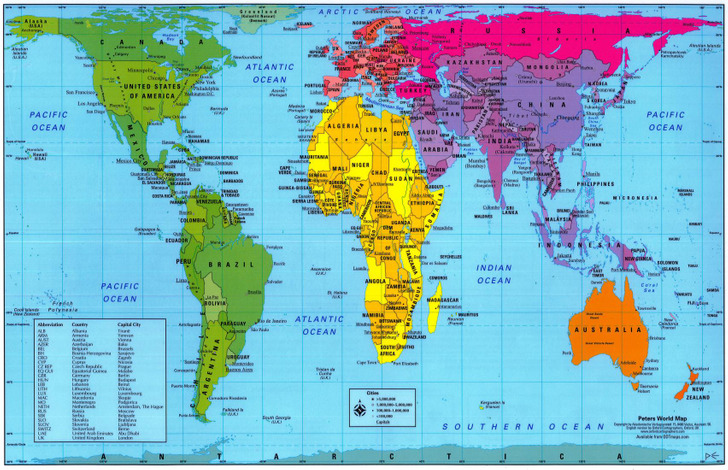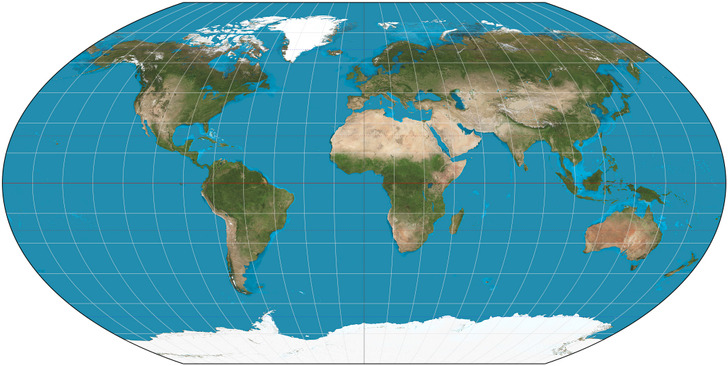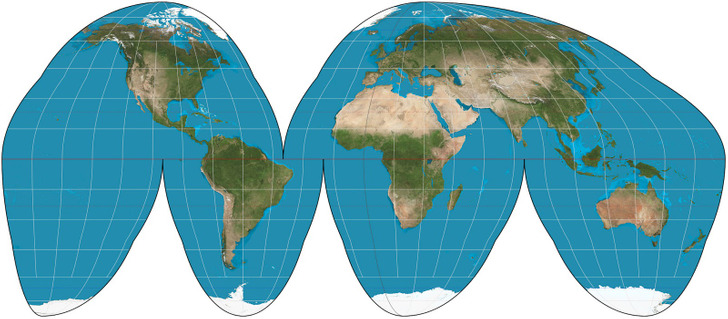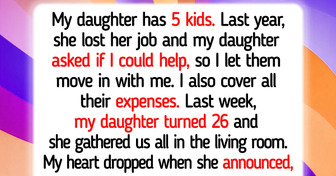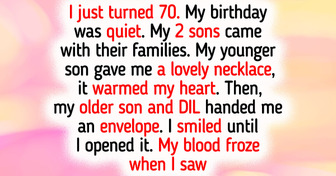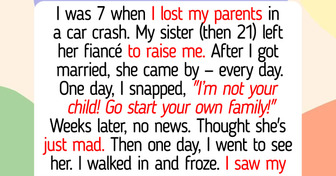22 People Who Found a Hidden Treasure Where They Least Expected It

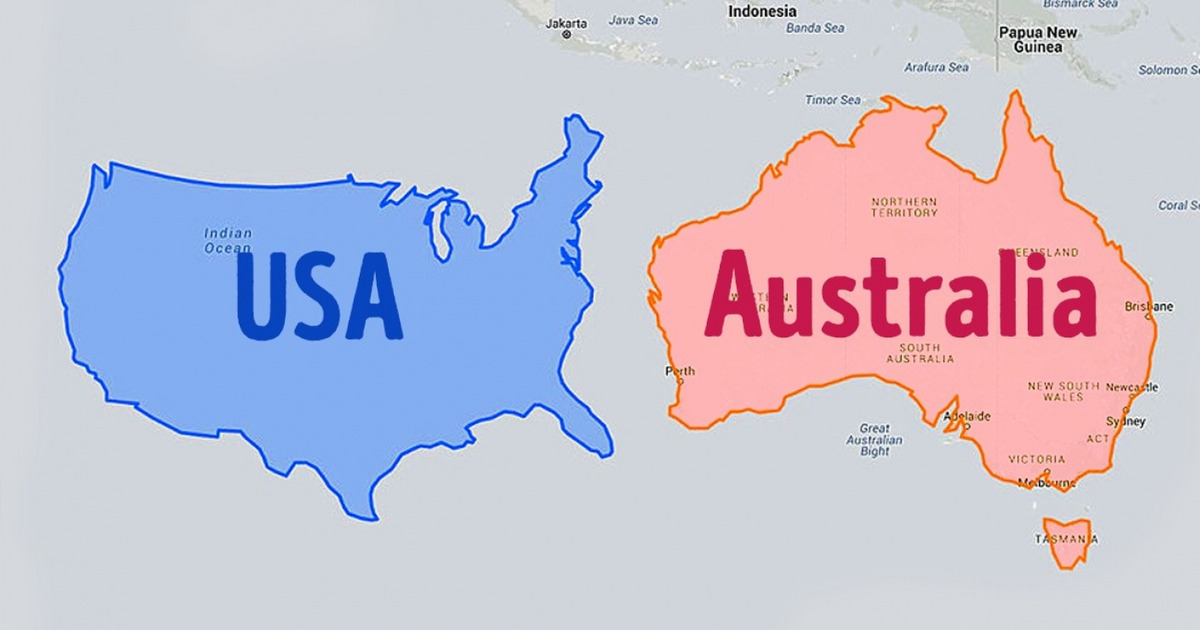
We at Bright Side found out a lot of fascinating new things here. Take a look, and see for yourself.
Let’s first take a look at Greenland. A very large country, right? Almost as big as the entire continent of South America.
But when its position is shifted to the same latitude of the USA, it’s clear that Greenland is nowhere near as big as we thought. And when moved still further to the equator, we can see that it’s nothing special compared to other islands.
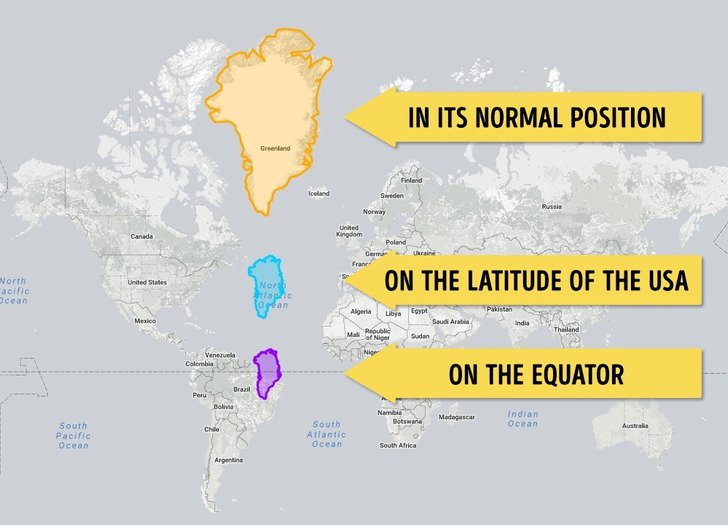
It seems that Australia isn’t particularly large. Firstly, this is because it’s close to the equator. Secondly, it’s separated from the other continents and thus difficult to compare with anything else. But take a look at this map...
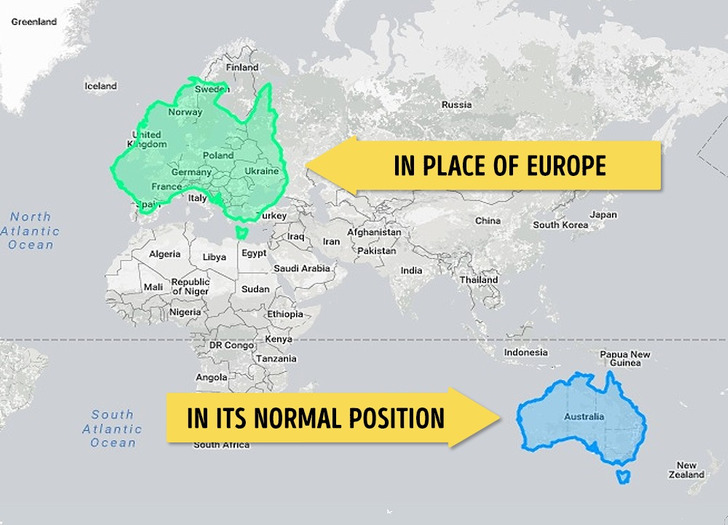
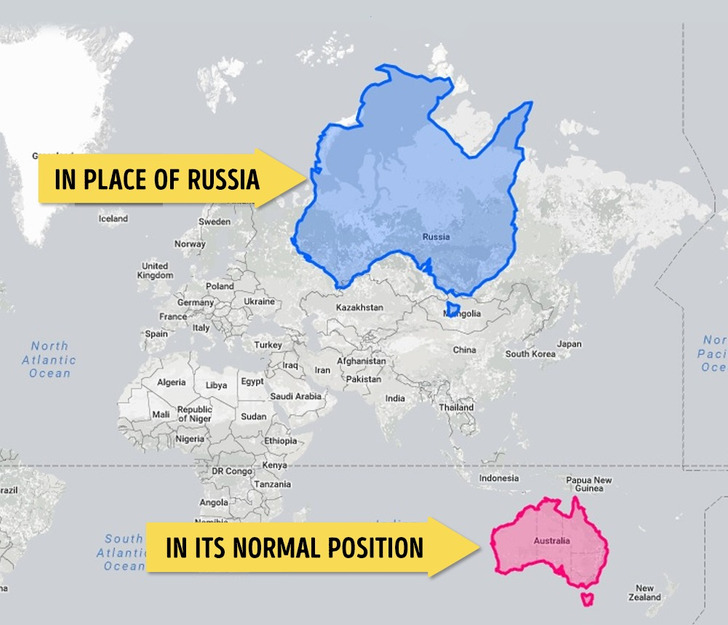
Look at how the shape of Australia has changed when it’s moved to the north. This is because it’s now within the Arctic Circle, much closer to the pole, and as a result it becomes stretched.
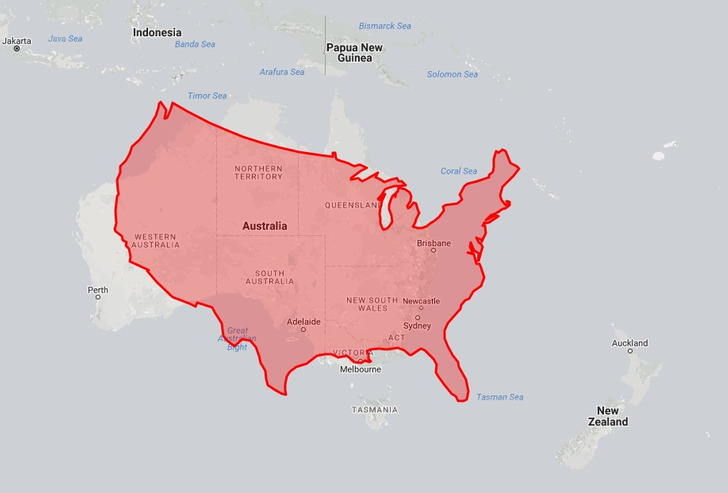
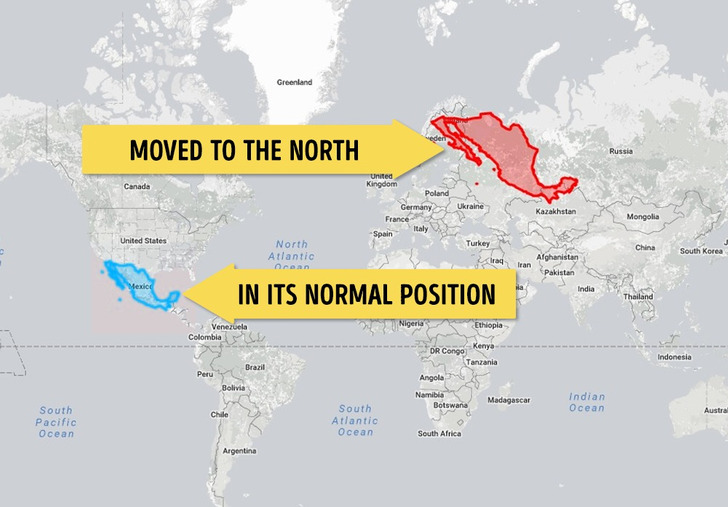
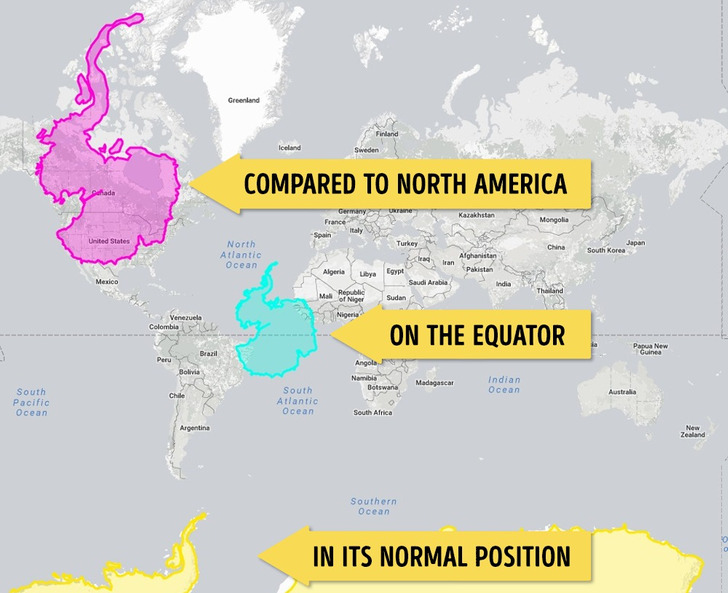
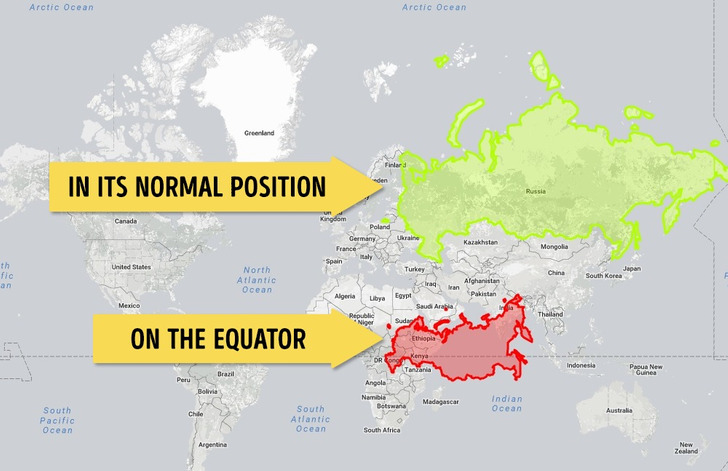
Russia’s not only the largest country in the world but also the most northerly. This is why on the map it looks absolutely huge, larger even than many continents.
But when Russia is moved to the equator, it becomes clear that it’s actually two to three times smaller.
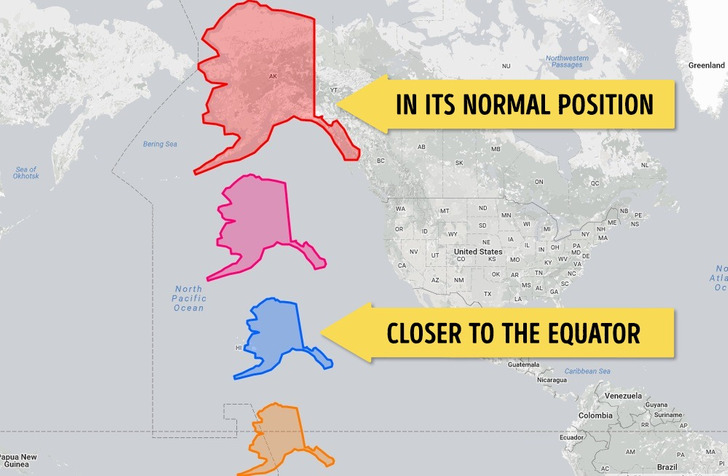
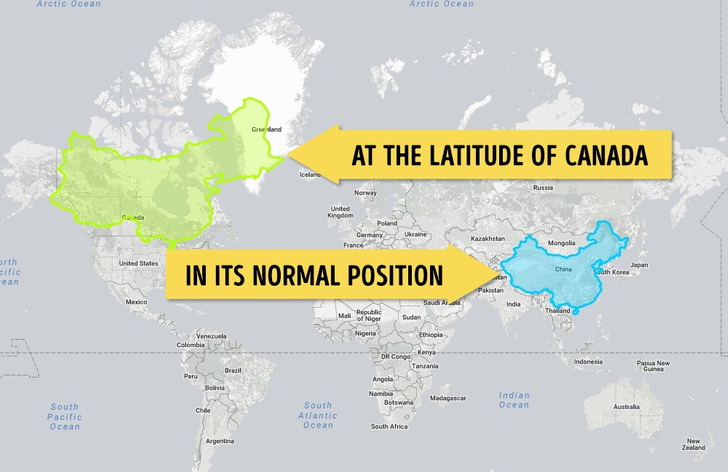
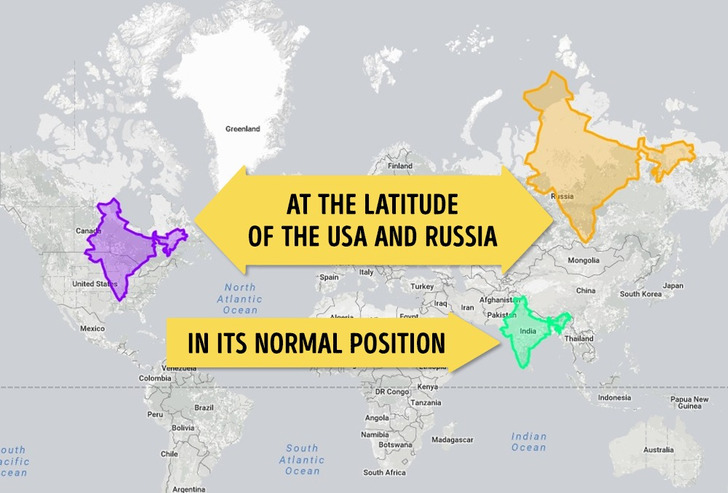
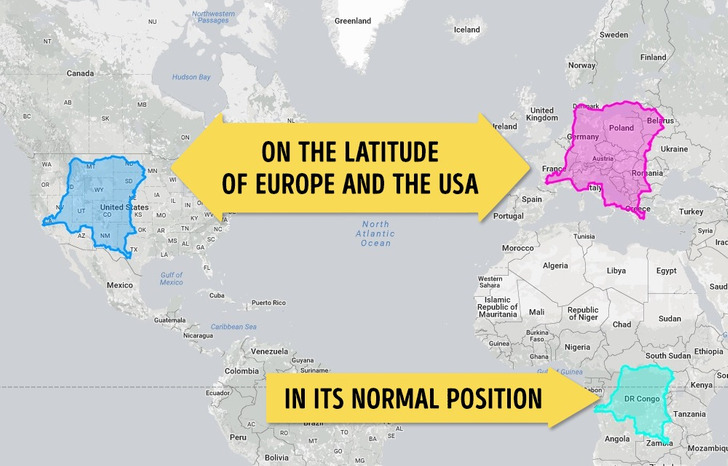
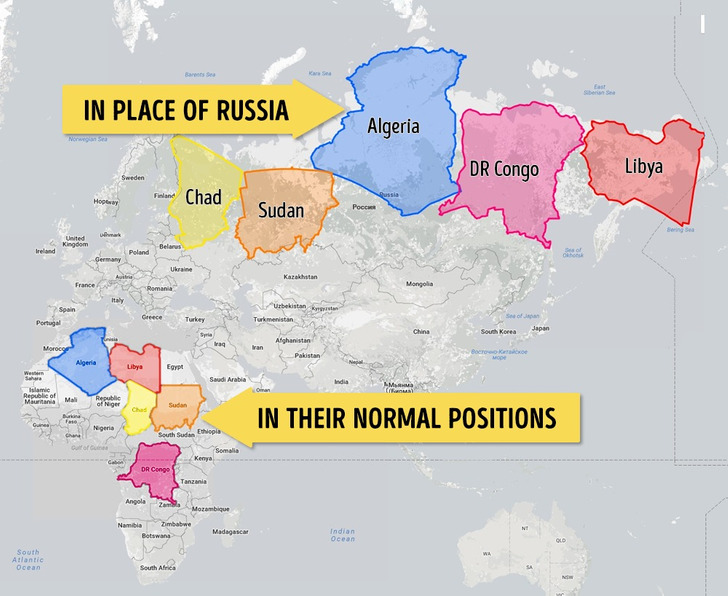
Algeria, the Democratic Republic of Congo, Sudan, Libya, and Chad are all relatively large countries, but normally it’s hard to appreciate this because of their geographical positions. But once they’re moved collectively across the globe, they’re actually nearly as large as Russia.
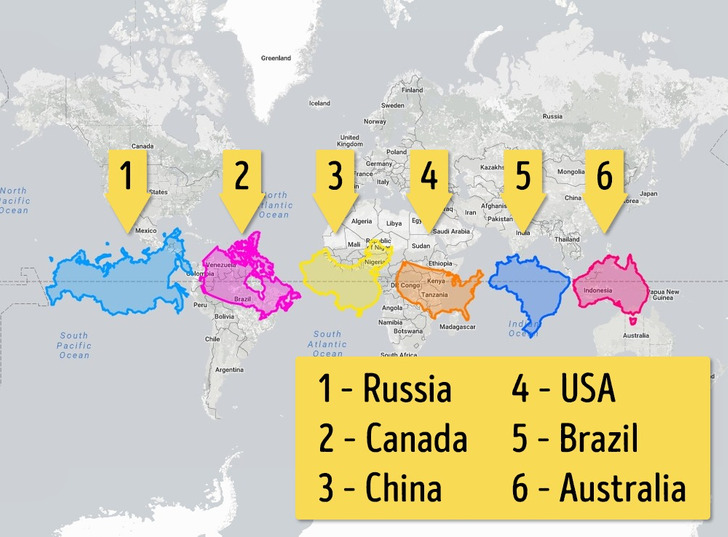
Russia, of course, remains huge as before, but it’s nevertheless no longer so titanically large as it first seems when at its normal latitude. Here we can also see much better just how large Australia really is.
Here are some other cartographic projections that experts use to try and provide a realistic depiction of the Earth’s geography:
